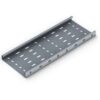250mm x 50 mm Galvanized Cable Tray
Cable management in commercial and industrial environments requires robust support systems that protect electrical infrastructure investments while accommodating future expansion needs. The 250mm x 50mm Galvanized Cable Tray provides a proven solution that combines structural strength with corrosion resistance, creating a foundation for reliable cable systems that serve facilities for decades.
Technical Specifications and Structural Performance
Dimensional Standards and Load Capacity
The 250mm x 50mm Galvanized Cable Tray offers optimal proportions for medium-duty cable installations, providing sufficient width for multiple cable runs while maintaining manageable weight for installation crews. The 50mm depth delivers adequate structural rigidity for spans up to 3 meters without additional support brackets.
Galvanized Steel Construction Benefits
- Hot-dip galvanizing process: Zinc coating thickness typically 85 microns minimum
- Corrosion resistance: 50+ year service life in normal environmental conditions
- Material grade: High-strength steel meeting international structural standards
- Edge finishing: Smooth, safe edges that protect cable jackets from damage
- Ventilation design: Perforated base promotes airflow and heat dissipation
Load-Bearing Specifications
Engineering calculations demonstrate safe working loads of 75kg per linear meter when properly supported at recommended intervals. The tray design incorporates safety factors that accommodate dynamic loads from thermal expansion and occasional maintenance access.
Installation Methods and Support Systems
Mounting and Support Options
The 250mm x 50mm Galvanized Cable Tray accommodates various mounting configurations including wall brackets, ceiling suspension, and floor-standing support structures. Standardized connection hardware ensures compatibility with most building structural systems and installation preferences.
Joining and Expansion Techniques
Purpose-designed joining plates and expansion joints maintain system integrity while accommodating thermal movement. Professional installation practices include proper expansion joint placement every 30 meters to prevent stress accumulation during temperature cycles.
Cable Entry and Exit Management
Integrated cable entry systems including risers, reducers, and transition fittings enable smooth cable routing between different system levels and building areas. The 250mm x 50mm Galvanized Cable Tray connects seamlessly with smaller and larger tray sizes as installation requirements demand.
Applications Across Industrial and Commercial Sectors
Manufacturing Facility Cable Management
Industrial plants rely on cable trays to organize power distribution, control wiring, and communication cables in harsh environments. The galvanized construction resists corrosion from chemical vapors, moisture, and temperature variations common in manufacturing settings.
Commercial Building Infrastructure
Office buildings, hospitals, and educational facilities use cable trays to support structured cabling systems, power distribution, and building automation networks. The 250mm x 50mm Galvanized Cable Tray provides the capacity needed for modern high-density cable installations.
Data Center and Telecommunications Applications
Mission-critical facilities require cable support systems that maintain signal integrity while providing easy access for moves, adds, and changes. The open design promotes heat dissipation essential for high-power data cables and fiber optic systems.
Environmental Resistance and Durability Factors
Corrosion Protection Performance
The hot-dip galvanizing process creates a metallurgical bond between zinc and steel substrate that provides superior corrosion protection compared to painted or powder-coated alternatives. The 250mm x 50mm Galvanized Cable Tray maintains structural integrity even when minor coating damage occurs.
Temperature Cycle Resistance
Galvanized steel construction handles repeated thermal expansion and contraction without degradation. The material properties remain stable across temperature ranges from -40°C to +60°C, covering most installation environments worldwide.
Chemical and Environmental Exposure
Industrial environments expose cable management systems to various chemicals, cleaning agents, and atmospheric contaminants. Galvanized protection resists most common industrial chemicals while maintaining structural and aesthetic properties over extended service periods.
Cable Protection and System Performance
Cable Jacket Preservation
Smooth internal surfaces and rounded edges prevent abrasion damage to cable jackets during installation and service. The 250mm x 50mm Galvanized Cable Tray design eliminates sharp edges and protrusions that could compromise cable integrity over time.
Electromagnetic Compatibility Considerations
Steel construction provides natural electromagnetic shielding for sensitive data cables when properly grounded. The continuous metallic path supports electrical safety requirements while reducing electromagnetic interference in complex installations.
Thermal Management Benefits
Open tray design promotes natural convection cooling that prevents cable overheating in high-load applications. Proper cable spacing within the tray ensures adequate heat dissipation for power cables operating near their ampacity limits.
Economic Benefits and Life-Cycle Value
Initial Cost Advantages
The 250mm x 50mm Galvanized Cable Tray provides excellent value compared to enclosed conduit systems or specialty cable management products. Material and installation costs typically prove 30-50% lower than equivalent enclosed systems while offering superior access and flexibility.
Long-Term Maintenance Savings
Galvanized construction eliminates painting and coating maintenance required by other metal finishes. The corrosion resistance ensures decades of service without replacement, reducing life-cycle costs significantly compared to alternative materials.
System Flexibility and Future Value
Open tray design accommodates cable additions, modifications, and technology upgrades without major infrastructure changes. The 250mm x 50mm Galvanized Cable Tray investment provides lasting value as facility requirements evolve over time.
Code Compliance and Safety Standards
Electrical Code Requirements
Installation must comply with local electrical codes regarding cable support intervals, grounding requirements, and fire stopping provisions. The 250mm x 50mm Galvanized Cable Tray meets or exceeds requirements in most jurisdictions when properly installed and configured.
Fire Safety and Smoke Generation
Steel construction provides superior fire resistance compared to polymer-based cable management systems. The non-combustible material supports fire safety objectives while meeting smoke generation limitations required in occupied buildings.
Structural Safety Considerations
Proper engineering analysis ensures tray installations can support intended loads plus safety margins required by building codes. Professional design services verify structural adequacy for specific installation conditions and loading requirements.
Professional Installation Best Practices
Planning and Design Considerations
Successful cable tray installation requires careful planning including load calculations, support spacing, and thermal expansion accommodation. The 250mm x 50mm Galvanized Cable Tray performs optimally when installation follows established engineering practices and manufacturer guidelines.
Quality Control and Inspection
Professional installation includes verification of support adequacy, proper grounding connections, and compliance with applicable codes. Quality control measures ensure long-term system performance and safety compliance.
Documentation and As-Built Records
Comprehensive installation documentation supports future maintenance, modifications, and regulatory inspections. Accurate as-built drawings prove essential for efficient system management throughout the facility’s operational life.
Comparison with Alternative Cable Management Solutions
Advantages Over Enclosed Conduit Systems
Open tray design provides superior heat dissipation, easier cable access, and lower installation costs compared to enclosed conduit systems. The 250mm x 50mm Galvanized Cable Tray offers flexibility that enclosed systems cannot match for dynamic installations.
Benefits Compared to Polymer Cable Trays
Steel construction provides superior strength, fire resistance, and electromagnetic shielding compared to plastic alternatives. Galvanized protection ensures longevity that exceeds polymer degradation timelines in most environments.
Integration with Hybrid Systems
Cable trays often integrate with other cable management methods including conduits, wireways, and cable ladders. The standardized design ensures compatibility with related products for comprehensive cable management solutions.
Selection Criteria and Specification Guidelines
Load and Capacity Assessment
Evaluate cable weights, quantities, and future expansion requirements when selecting the 250mm x 50mm Galvanized Cable Tray. Include safety margins for unexpected loads and thermal effects in capacity calculations.
Environmental Condition Analysis
Consider installation environment including temperature ranges, chemical exposure, humidity levels, and cleaning requirements. Galvanized protection suits most environments, but extreme conditions may require additional protective measures.
Installation Constraint Evaluation
Assess building structure, available space, access requirements, and installation logistics when planning tray systems. The 250mm width provides good capacity while maintaining reasonable weight for manual handling during installation.
Maintenance Requirements and Service Life
Routine Inspection Protocols
Regular visual inspection identifies potential issues including corrosion, structural damage, and overloading before they affect system performance. The 250mm x 50mm Galvanized Cable Tray requires minimal maintenance beyond periodic cleaning and inspection.
Predictive Maintenance Strategies
Monitoring load conditions, thermal effects, and environmental exposure helps predict maintenance needs and replacement timing. Proactive maintenance extends service life and prevents unexpected failures.
End-of-Life Considerations
Steel construction enables complete recycling at end of service life, supporting environmental sustainability objectives. The material value recovery helps offset replacement costs while minimizing waste disposal requirements.

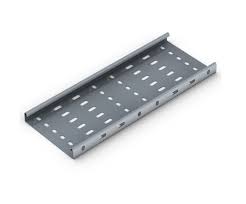
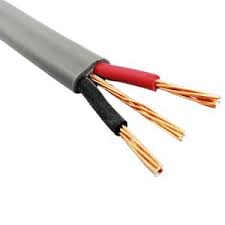
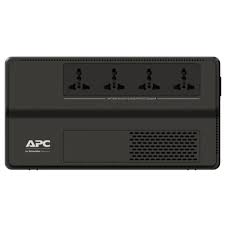
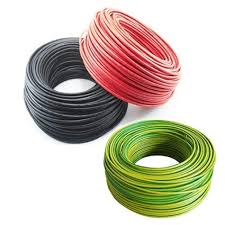
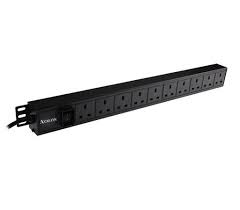
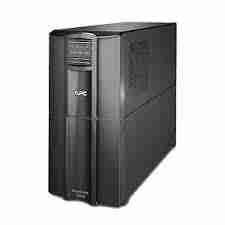
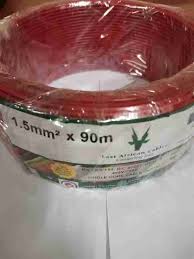
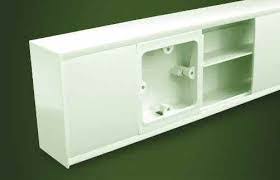
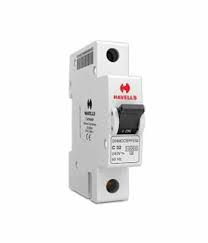
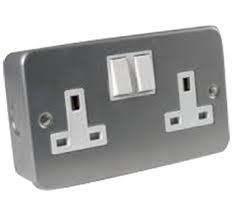
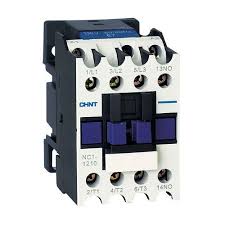
 No products in the cart.
No products in the cart. 